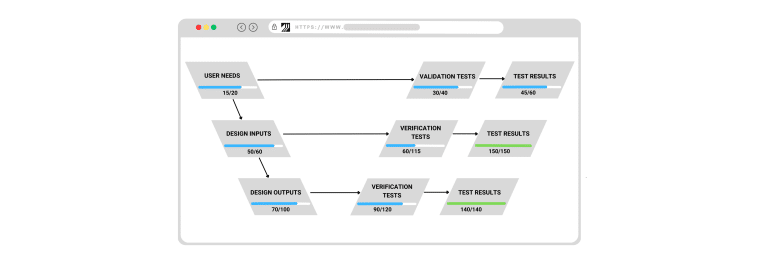5 Steps to Future-Proof Your QMS in the Age of Disruption
COVID-19 has disrupted the way we work – perhaps for ever. If your employees have been working remotely, it’s likely that they have been struggling to maintain quality and compliance protocols. Maintaining the quality standards of products and services, while also adhering to industry compliance requirements, is not easy. Especially when physical interactions, meetings and inspections are not always possible.
These problems have been exacerbated in cases where adequate online quality systems weren’t already in place at the time of the COVID disruption.
If quality of product or service remains intact, the risk of losing business or reputation can be minimized. But without adequate online systems supporting quality control, this is not always possible. For many organizations, the situation led to employees feeling overwhelmed or struggling to collaborate and stay engaged, informed and updated.
Getting ready for the next change
The ongoing crisis of COVID has affected businesses in ways never before encountered. Even those with a track record of being resourceful and resilient during hard times. Managers in the areas of quality management, WHS, risk and operations would agree it has been a time where unique challenges have had to be solved quickly. Businesses have had to adapt fast. Those moving quickly to incorporate more online solutions have appeared to steer their course well. To tackle the issue of limited physical presence for example, quality controllers became resourceful, conducting virtual inspections through onsite body cameras, while live-streaming back to head offices.
These have certainly been interesting and innovative times. No one will argue the strategic importance of proactively ensuring continued quality assurance in this new world. Strategies are needed to mitigate a range of potential risks, not only related to COVID, but from further change and disruption that may come.
Here are five practical steps to take into consideration in future-proofing your quality control and compliance.
1: Standardize your processes
Get your processes under control. You can do this by standardizing all your operations and procedures. This can be achieved through categorization, simplification, optimization, and elimination of any duplication regarding activities or responsibilities. A good QMS will automatically take care of these elements, especially in cases where paper-based systems (involving Excel, Word, and Email) are being replaced with an integrated system. Cloud-based quality control platforms can aid document control and commercial communication through connecting teams, applications and devices to one centralized hub.
2: Embed flexibility
Ensure there is an adequate level of flexibility built into your system. Make provision for constant innovation, continual change and possible disruption on the horizon.
Choose a quality management system which is highly configurable and flexible. One that allows for customization through the design of new forms and processes. Make sure it is a system that can grow alongside your business, scaling as required.
3: Establish robust authorization and control protocols
Make sure you nail authorization and control protocols. These are the foundational elements of a successful QMS. Establishing robust authorization and control protocols is easily achievable through an online system providing real-time visibility and traceability of tasks and responsibilities. Online QMS platforms enable remote approvals and electronic signoffs, with traceability, a necessary feature not only for these times but into the future.
4: Allow and promote remote collaboration
Encourage real-time collaboration in a remote work environment. You can achieve this through cloud-based solutions that enable effortless teamwork and deliver a competitive edge for businesses operating in fast-paced industries. Industry best practices and benchmarks remain consistent between various regions’ offices or collaborators. Time, effort and errors are minimized when everyone works from the same source.
5: Enhance your security when exchanging information remotely
Make sure your QMS is secure. To protect your business, the exchange of information containing trade secrets, intellectual property or any other confidential information needs to take place in a secure online environment. Email has become increasingly insecure, whereas a bespoke quality management system hosted in the cloud is secure by design. Cloud-based systems can also offer multi-level authorization and access based on role.
Organizations have come a long way as a result of the global pandemic. Sadly, though, the future holds further risk of disruption. All businesses need to seriously consider how they will future-proof to protect their quality control processes and compliance in the face of continual change and challenge.
If you’d like to know more about how Momentum QMS can make quality and compliance easier in a world of change, request a demo of the software.






